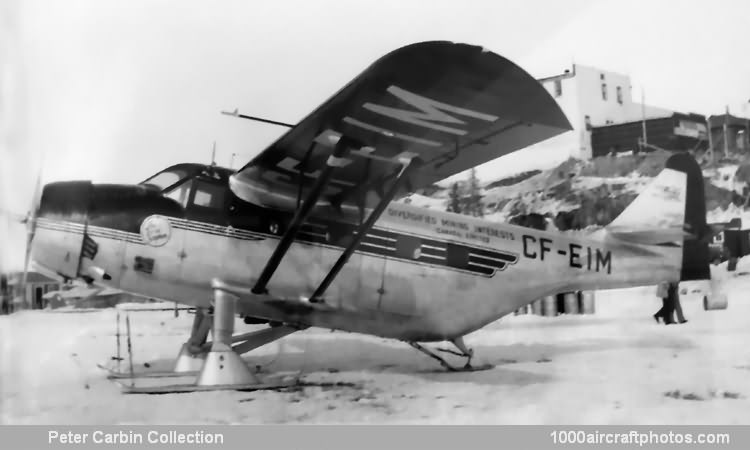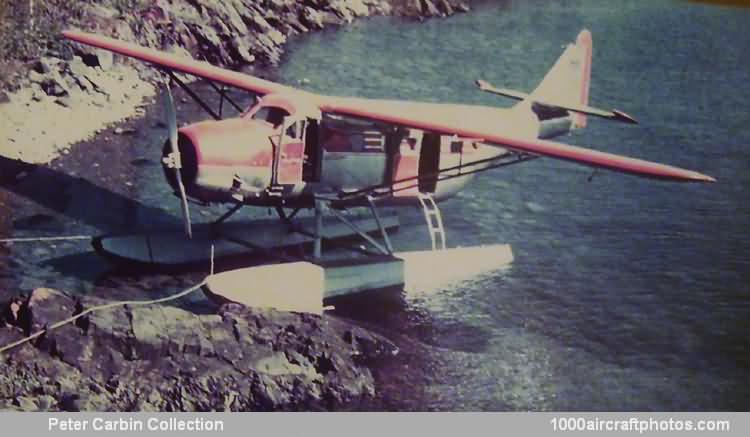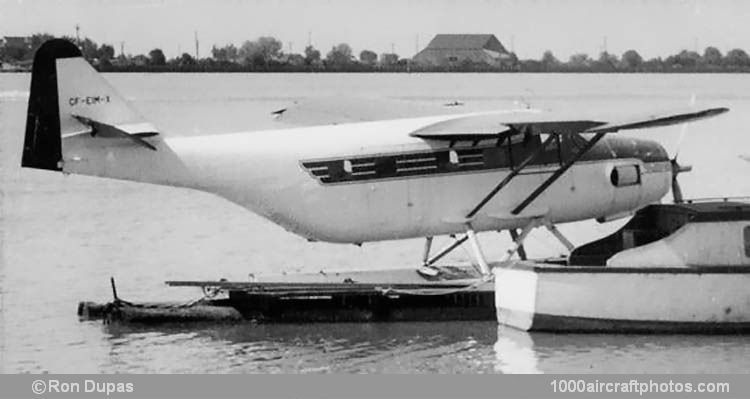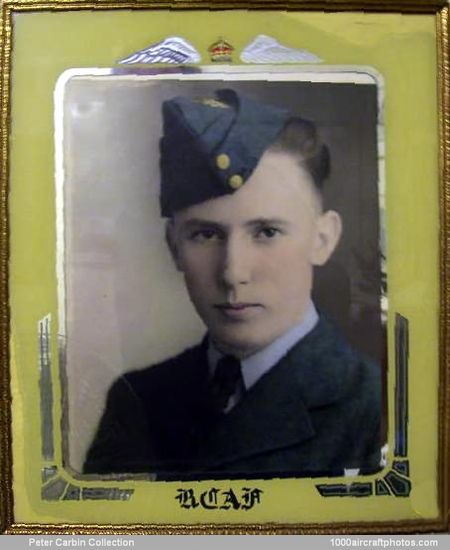Photographed in Northern Canada, ca. 1950, source unknown
12/31/2010. Remarks by
Johan Visschedijk: "Towards the end of WW II, Fairchild Aircraft began the design of a new bush aircraft. J.A.T. Butler was Chief Engineer, J.J. Walker Assistant Chief Engineer, E.H. Higgins Assistant Designer, and E. Kosko and R.D. Richmond were in charge of stressing and aerodynamics respectively.
The aircraft was the F-11 Husky and incorporated a number of features which were to make it popular with its users. The rear fuselage was upswept which permitted a large rear door for loading long articles, including canoes, and making it possible when used as a seaplane to heel the Husky onto a beach and unload the cargo without getting one's feet wet. There were also large side doors for conventional loading.
The rudder was interchangeable with the elevators and the flaps and the left and right ailerons were also interchangeable. A high aspect ratio wing with slotted flaps was chosen for good performance. The fuel tanks, like the DHC-2s which followed, were located in the fuselage for accessibility. Accommodation was provided for two pilots, and eight passengers could be seated on bench seats or up to seven in individual chairs.
An intended tricycle landing gear and a cantilever float chassis were never developed. The fuselage and the fin and tail plane were of aluminum stressed-skin construction. The wing was an all-metal structure but fabric covered aft of the front spar on the upper surface and between the spars on the lower surface. The flaps, and control surfaces were of fabric covered metal construction.
Fairchild F-11-2 Husky (CF-EIM-X) (
Ron Dupas Collection)
Redesignated F-11-2, CF-EIM-X (the 'X' was temporary) was first flown by A. M. McKenzie, then vice president of Husky Aircraft at Vancouver, on 6 July, 1956. Of the six Huskies converted to F-11-2 standard, only the prototype installation was done by Husky Aircraft. Industrial Wings, a subsidiary of Harrison Airways, Vancouver, bought the Husky rights in 1970, and more powerful engines were planned including a propeller-turbine in 1975 but none materialized, and Husky production was never resumed. The more powerful F-11-2 proved to be a most popular aircraft and the type saw most of its service in British Columbia."
/ / / / / / / / / / / / / / / / / / / / Orval W. Carbin
12/31/2010. Remarks by
Peter Carbin: "My father, Orval W. Carbin, flew the CF-EIM after he was discharged from the RCAF. He served in WW II as crew chief in a Handley Page Halifax B.Mk.II. He learned to fly in a Tiger Moth and also flew the Avro Anson. After his bush flying experience in Northern Canada he became employed at Avro Canada where he worked on the Arrow. He eventually moved to the USA where he passed away. I would appreciate hearing from anyone who knew my father during his time in the RCAF."




